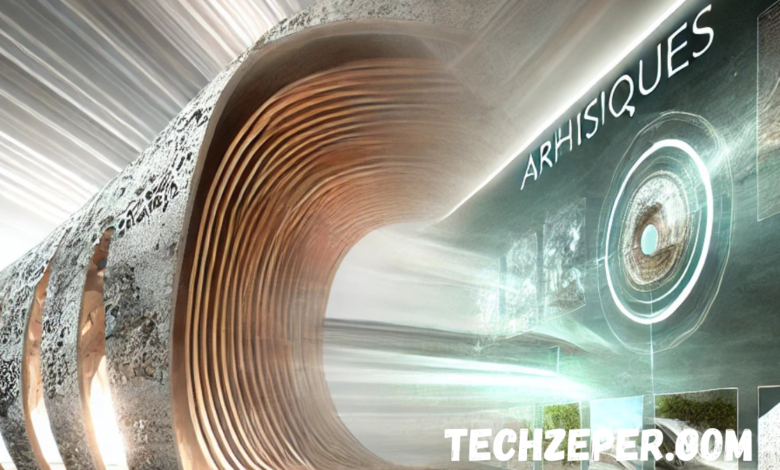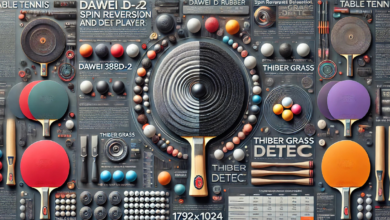What Are Arkistiques? Discover Their Meaning and Applications

New concepts and terminologies frequently emerge in the ever-evolving world of creativity and technology. One such intriguing term that has been gaining traction is “Arkistiques.” While the word might sound novel and enigmatic, it has started to carve out a niche in various fields. But what are Arkistiques, and why are they becoming so popular? This article aims to delve into the meaning of Arkistiques, their origins, and how they are applied across different industries. Let’s explore this fascinating concept.
What Are Arkistiques?
What are Arkistiques? Arkistiques is a term used to describe a blend of artistic and architectural elements, often applied to designs, structures, or digital creations that emphasize creativity, aesthetics, and functional elegance. It combines the Greek root “ark,” meaning “to build or structure,” with “artistic,” a French word that implies artistic qualities. Together, what are arkistiques symbolize a fusion of creativity, design, and structure. Essentially, it refers to creative endeavours that are also functional, much like how architecture marries form and function.
The concept of what are arkistiques can be seen in various domains, from visual arts to digital design, where creativity meets utility. This approach encourages creators to think outside the box, blending aesthetics with practicality and pushing the boundaries of traditional design.
Origins of the Term “Arkistiques”
The term Arkistiques is relatively new and is rooted in the convergence of art and architecture. Although the concept of blending art with utility has been around for centuries, the formalization of this idea under the name “Arkistiques” emerged in the early 21st century. As industries began to demand more innovative and functional designs, a need arose for a term encapsulating this fusion. But to answer the question, what are arkistiques? They are art and design’s creative and functional intersection, allowing for unique, practical creations.
Artisans, designers, and architects have always strived to create beautiful and valuable works. Arkistiques was coined to describe this symbiosis more succinctly, capturing the essence of this creative pursuit. As the digital world expanded, Arkistiques found its place in web design, digital art, and even virtual reality experiences, highlighting its universal appeal.
Key Features of Arkistiques
Arkistiques stand out due to their unique combination of characteristics. Here are some of the main features that define them:
- Aesthetic Appeal:
- At the core of Arkistiques is an emphasis on aesthetics. Whether it’s a building, furniture, or a digital interface, Arkistiques are designed to be visually appealing, drawing inspiration from various art movements and styles.
- Functionality:
- Unlike traditional art, which may prioritize beauty over utility, Arkistiques are designed with functionality. Every element serves a purpose, making the design beautiful and practical.
- Innovative Design:
- Creativity and innovation are central to the Arkistiques concept. This means breaking away from conventional designs and exploring new ways to combine form and function. It uses unique shapes, materials, and colours to create something distinct.
- Cross-Disciplinary Approach:
- Arkistiques are not limited to a single field. They can be found in architecture, industrial design, graphic design, digital media, and culinary arts. This cross-disciplinary approach allows for endless possibilities and interpretations.
- Sustainability:
- In modern applications, many Arkistiques focus on sustainable practices. Designers are mindful of using eco-friendly materials and processes, ensuring the creations are beautiful, functional, and environmentally responsible.
Applications of Arkistiques Across Different Industries
Arkistiques have found applications across various industries, showcasing the concept’s versatility. Below, we explore some of the most prominent sectors where Arkistiques are making an impact:
- Architecture and Interior Design
Perhaps the most apparent application of Arkistiques is in architecture and interior design. Buildings and interiors designed with Arkistiques principles are functional spaces and works of art. Architects incorporate intricate designs, patterns, and structures that make a building stand out while still serving its intended purpose. This might involve using natural materials, innovative lighting solutions, and thoughtful space planning to create aesthetically pleasing and practical environments.
For example, modern museums, cultural centres, and even residential homes often embody what are arkistiques principles, uniquely blending form and function. Interior designers also apply these concepts by choosing furniture, décor, and layout that are as beautiful as they are functional.
- Digital Design and Web Development
In the digital world, Arkistiques are becoming increasingly popular. Web developers and digital designers are applying the principles of Arkistiques to create websites and digital interfaces that are not just user-friendly but also visually stunning. This involves using clean layouts, engaging visuals, and intuitive navigation to enhance the user experience.
Websites designed with an Arkistiques approach focus on the flow of information and interaction, ensuring a seamless user experience. For instance, e-commerce platforms can use these principles to make shopping online more engaging and straightforward.
- Product Design
Product designers also utilize Arkistiques principles to develop aesthetically pleasing items that serve a practical purpose. This can range from everyday household items like kitchen utensils to high-end electronics. The goal is to create functional and desirable products because of their design.
Think of companies that design sleek, minimalist gadgets with intuitive controls or furniture pieces that double as art. These products not only fulfil a need but also enhance the space they occupy, making them perfect examples of Arkistiques.
- Art and Sculpture
While traditional art is usually appreciated for its aesthetic qualities, antique art adds an element of functionality. Sculptures, installations, and other forms of art that incorporate Arkistiques might serve as furniture, lighting, or even interactive pieces. This blurs the line between art and utility, creating a more dynamic and engaging experience for the viewer.
Artists who adopt the Arkistiques approach often experiment with unconventional materials and designs, creating pieces that invite viewers to interact with them or use them in some way, enhancing their practical value.
- Virtual Reality (VR) and Augmented Reality (AR)
In the realm of technology, Arkistiques are influencing the development of virtual and augmented reality experiences. These technologies rely on creating immersive environments and incorporating Arkistique principles can enhance the visual and interactive aspects of these experiences.
For example, a VR experience designed with Arkistiques in mind might feature beautifully designed, functional virtual spaces that users can navigate easily, making the virtual environment feel more genuine and engaging.
The Future of Arkistiques
The concept of Arkistiques is still evolving, and as technology and creativity merge, the possibilities are endless. The future of Arkistiques may see more integration into smart home technology, where the focus will be on creating devices and systems that are functional and blend seamlessly into home décor.
As sustainability becomes a critical concern, future Arkistiques designs will likely emphasize eco-friendly materials and energy-efficient processes. Designers and artists will continue to push the boundaries, exploring how the principles of Arkistiques can be applied in new and innovative ways.
How to Create Arkistiques Designs
Creating Arkistiques designs requires a careful balance of creativity and functionality. Here are some tips for aspiring designers:
- Focus on Simplicity: Simple designs often have the most significant impact. Focus on clean lines and uncluttered layouts.
- Use High-Quality Materials: Quality materials enhance a design’s aesthetic and functional aspects, whether digital or physical.
- Think About Function First: Start with the functionality and design around it. This ensures that the aesthetic does not compromise the usability of the design.
- Experiment and Innovate: Don’t be afraid to experiment with new shapes, materials, or techniques. The most successful Arkistiques often bring something new to the table.
- Incorporate Sustainable Practices: Whenever possible, use materials and methods that are environmentally friendly. This adds value to your design and appeals to modern consumers.
Conclusion
What are Arkistiques? Arkistiques represent a modern approach to design where aesthetics meet functionality. Arkistiques has found applications across architecture, digital design, product development, and more by combining artistic elements with practical purposes. The future looks bright for this concept as more designers, artists, and innovators explore bringing beauty and utility together in new and exciting ways.
5 FAQs About Arkistiques
- What are Arkistiques?
- Arkistiques blends artistic and architectural elements, emphasizing aesthetics and functionality. It applies to designs that are both beautiful and practical.
- Where did the concept of Arkistiques originate?
- The idea originated from the fusion of art and architecture, and it has been formalized to describe creative designs that blend form and function. It became popular in the early 21st century.
- In which industries are Arkistiques commonly used?
- Critiques can be found in architecture, interior design, digital design, product development, art, and virtual and augmented reality.
- What are the critical features of Arkistiques?
- The key features include aesthetic appeal, functionality, innovative design, a cross-disciplinary approach, and sustainability.
- How can one create Arkistiques designs?
- To create Arkistiques designs, focus on simplicity, use high-quality materials, prioritize functionality, experiment with new ideas, and incorporate sustainable practices.
You May Also Read: https://techzeper.com/dawei-388d-2-and-thiber-grass-detec/





